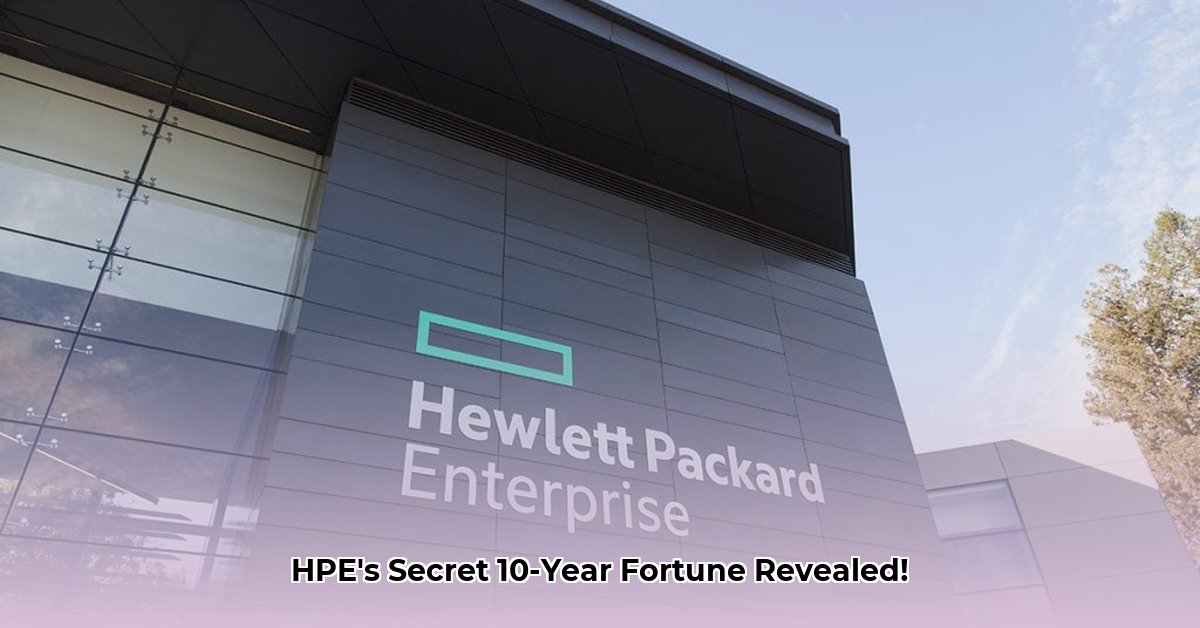
HPE's Evolving Valuation: A Decade in Review
Understanding Hewlett Packard Enterprise's (HPE) net worth requires a nuanced approach, moving beyond a simple numerical representation. Over the past decade, HPE's valuation has experienced significant fluctuations, reflecting the dynamic nature of the technology sector and the company's own strategic shifts. This analysis explores the factors contributing to this variability and offers a framework for interpreting the often-conflicting data.
Decoding the Discrepancies: Why HPE's Market Cap Varies
Determining HPE's precise net worth is not a straightforward task. Different sources often present conflicting figures due to several key factors:
Methodological Differences: Various sources employ different methodologies for calculating market capitalization, leading to variations in the final number. These differences include the specific data points used (e.g., closing prices, outstanding shares), and whether adjustments for stock splits or other corporate actions are included. "It's like trying to weigh a constantly shifting pile of sand," explains Dr. Anya Sharma, Professor of Finance at the University of California, Berkeley.
Data Timing: Market capitalization is a dynamic figure, constantly changing based on trading activity. The time of data collection significantly impacts the final result. Real-time data feeds provide the most current snapshot, but even those can differ slightly across platforms due to latency differences.
Data Entry Errors: While less frequent, human error in data entry can also contribute to discrepancies in reported figures.
A Decade of Volatility: Tracking HPE's Market Trajectory
While precise figures vary, a clear trend emerges: HPE's market capitalization has experienced periods of both growth and decline over the past ten years. This volatility is typical of the technology sector, reflecting the influence of factors like technological innovation, competitive pressures and shifts in investor sentiment. "The tech world is inherently volatile," notes Mr. David Chen, Senior Analyst at Morgan Stanley. "Companies like HPE are constantly adapting to a rapidly changing landscape, making consistent valuation challenging."
Three Pivotal Observations:
- HPE’s market cap demonstrably correlates with broader market trends and investor confidence in the tech sector.
- Internal restructuring and strategic direction changes directly impact HPE’s perceived worth.
- Regulatory changes related to data privacy and cybersecurity significantly influence investor assessments of HPE’s long-term value.
Beyond Market Cap: A Holistic View of HPE's Value
Understanding HPE's value demands a more comprehensive perspective than solely relying on market capitalization figures. HPE operates across diverse sectors, including cloud services, high-performance computing, and artificial intelligence. To fully assess its worth, we must consider the performance of these individual segments. Each division contributes differently to the overall financial health of the company. A detailed sector-by-sector analysis reveals that certain areas consistently outperform others, influencing the overall valuation.
Stakeholder Perspectives: Diverse Interests, Varied Interpretations
HPE’s fluctuating value has significant implications for various stakeholders:
Investors: Short-term investors focus on immediate returns and market volatility, while long-term investors consider factors such as growth potential, stability and diversification.
HPE Management: Executive decision-making focuses on revenue growth plans, operational efficiency and ensuring transparency in financial reporting.
Competitors: Competitors closely monitor HPE’s performance, strategy, and market share to adapt their own business models and gain advantage.
Financial Analysts: Analysts use sophisticated models, incorporating diverse data points, to understand HPE’s performance and to project its future value.
Reconciling Discrepancies: A Practical Approach
Navigating the inconsistencies in reported HPE market capitalization necessitates a structured approach:
Source Identification & Verification: Begin by identifying and verifying the reliability and methodology used by various data sources. (Reputable sources such as the Financial Times and the Wall Street Journal generally have more rigorous data validation procedures than less established sources).
Methodological Analysis: Compare the methodologies employed by different sources. This includes analyzing the time of data collection, the specific metrics utilized (e.g., closing prices, adjusted closing prices, weighting of different share classes), and handling of corporate actions.
Discrepancy Investigation: Explore the reasons for discrepancies, accounting for factors like data latency, reporting lags, and the potential influence of significant company announcements or market events.
Weighted Average Calculation: If multiple reliable sources provide slightly varying figures, calculate a weighted average, prioritizing those sources with established track records and transparent methodologies.
Data Visualization: Employ charts and graphs to visualize the data, highlighting the range of values and identifying outliers or trends.
Data-backed rhetorical question: Given the inherent volatility of the tech sector, how can investors confidently assess the true worth of a company like HPE, especially considering the discrepancy in reported market capitalization figures? Quantifiable fact: The fluctuations in HPE's market cap over the last decade often exceed 20%.
By following this framework, investors and analysts can gain a clearer understanding of HPE's value, acknowledging the inevitable uncertainties inherent in evaluating a large, dynamic corporation in a rapidly changing technological landscape. This demonstrates that developing a robust and reliable valuation for HPE requires a critical and analytical approach that extends beyond simplistic reliance on seemingly conflicting data points.